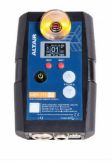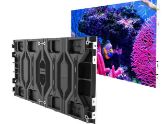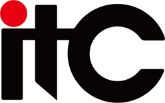Choosing an LED Touchscreen TV: IR Touchscreen Features and Functionality
Part of a series of articles on factors to consider when selecting a touchscreen LED TV for the education or corporate sector.
IR Touchscreen Features and Functionality – explained by our team at Edwards
 Infrared touchscreens (IR) use sensors to detect interruptions in the infrared light grid, providing high accuracy and the ability to detect multiple touch points simultaneously. IR offer several advantages that make them a popular choice for large touchscreen TVs:
Infrared touchscreens (IR) use sensors to detect interruptions in the infrared light grid, providing high accuracy and the ability to detect multiple touch points simultaneously. IR offer several advantages that make them a popular choice for large touchscreen TVs:
Accuracy: IR touchscreens provide high accuracy in touch detection, ensuring precise and reliable input recognition. They can accurately track touch points, enabling precise interactions and gestures.
Durability: IR touchscreens are highly durable and resistant to damage. Since there is no surface coating or overlay, they are less prone to scratches and physical wear. This durability makes them suitable for high-traffic environments or applications where the display may be subjected to harsh conditions.
Optimal Light Transmission: IR touchscreens do not require a conductive coating on the display surface, allowing for optimal light transmission. This results in excellent visibility and image clarity, ensuring that the screen's visuals are not compromised by the touchscreen technology.
No Ghosting Effects: IR touchscreens do not suffer from ghosting effects, where the display registers unintended touch inputs due to residual charges or sensitivity issues. This ensures accurate touch recognition without false inputs, enhancing the overall user experience.
Cost-Effective: IR touchscreens can be cost-effective compared to other touch technologies. The absence of complex conductive layers or specialized materials reduces manufacturing costs, making them an affordable option for applications with budget constraints.
Scalability: IR touch technology is scalable to larger screen sizes, making it suitable for displays of various sizes, from small kiosks to large interactive video walls. This scalability allows for flexible implementation in different environments and applications.
Resistance to Environmental Factors: IR touchscreens are not affected by environmental factors such as dust, humidity, or temperature changes. They are resistant to surface contaminants and are generally unaffected by ambient light conditions, ensuring reliable touch detection in diverse settings.
Stylus Support: IR touchscreens can detect touch from any object that interrupts the infrared light beams including styluses (or gloved hands, useful in some industrial settings).
As a result, IR touchscreens are the preferred choice for applications that require accurate touch input, compatibility with stylus-based interactions, durability, and cost-effectiveness. They are commonly used in schools, meeting rooms and conference facilities.
Check out our team’s other articles:
Choosing an LED Touchscreen TV: Picture Quality






















































